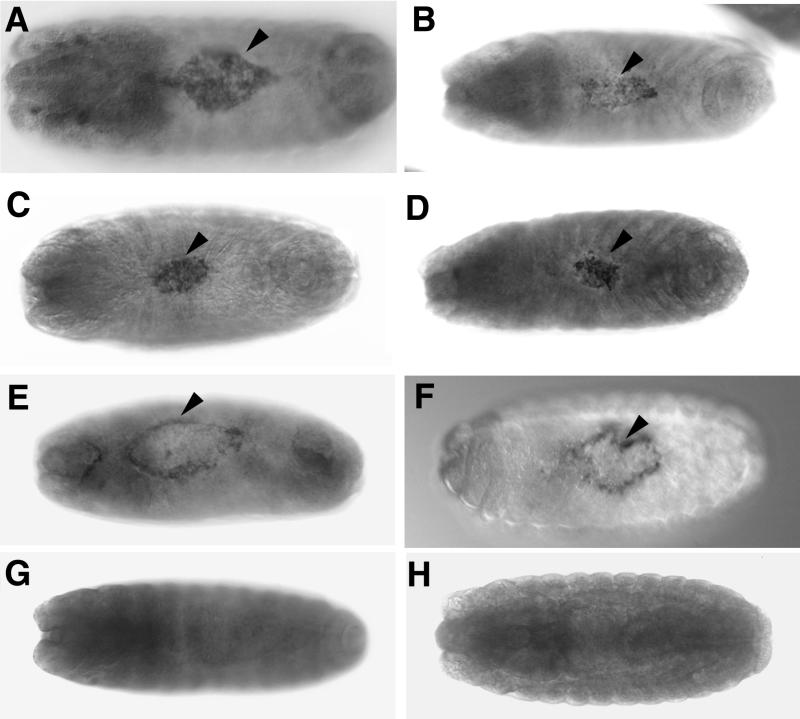FIG. 4.
RNA in situ hybridizations of DPAK (A) or DACK (B to H) riboprobes to embryos expressing Dcdc42 transgenes reveal that alteration of Dcdc42 signaling affects DPAK and DACK expression in tissues involved in dorsal closure. Embryos were staged based on the degree of head involution. (A) Dorsal view of early stage 15 UAS-Dcdc42N17; Hs-GAL4M-4 embryo that had been heat shocked for 1 h at 37°C, showing DPAK transcript accumulation in the amnioserosa (arrowhead). (B to D) Dorsal views of stage 15 UAS-Dcdc42V12/Hs-GAL4M-4 embryos that had been heat shocked for 1 h at 37°C, showing DACK transcript accumulation in the amnioserosa (arrowheads). (E and F) Dorsal views of stage 15 (E) and stage 16 (F) UAS-Dcdc42N17; Hs-GAL4M-4 embryos that had been heat shocked for 1 h at 37°C, showing DACK transcript accumulation at the leading edge at later stages than seen in wild-type embryos (arrowheads). The distorted dorsal hole in panel F is typical of the dorsal closure failures seen following Dcdc42N17 expression. (G) Dorsal view of stage 15 UAS-Dcdc42V12/Hs-GAL4M-4 embryo that had been maintained at 21°C, showing no areas of elevated DACK transcription on the dorsal surface. (H) Dorsal view of stage 15 UAS-Dcdc42N17; Hs-GAL4M-4 embryo that had been maintained at 21°C, showing no areas of elevated DACK transcription on the dorsal surface.

